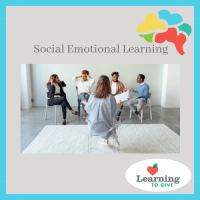This activity prompts young people to think and speak critically with their peers about a real-world topic. They consider how the topic applies to them and how it might impact others. During this activity, youth share their opinions, debate their positions, and sometimes even change sides as their opinions shift to accommodate new information or other viewpoints. This activity introduces young people to the concepts of bias and stereotypes by discussing how the judgments we make can be very damaging.
In this lesson, learners identify bullying behavior using two literature books, Mr. Lincoln's Way and The Secret Bully. They compare and contrast two examples of bullying behavior portrayed in the books and create a peer/staff/family survey to research bullying behavior in their own school community.
- Read more about What Is Bullying?
- Log in or register to post comments
Participants examine the meaning of and examples of stereotypes, prejudice, and discrimination. They reflect on ways that stereotypes develop and have the potential to turn into discrimination.
- Read more about New Kid on the Block
- Log in or register to post comments
Through an activity with differently wrapped gifts, youth examine the meaning of stereotypes and prejudice. They discuss the importance of respecting diverse voices to avoid stereotyping and prejudice.
- Read more about Stereotypes
- Log in or register to post comments
One of our roles in a civil society is connecting to diverse others and seeing their light within. In this lesson, learners watch a video and listen to an audio recording that both show how we can overcome first impressions about people and value the diversity of their experiences and culture.
- Read more about Observing First Impressions
- Log in or register to post comments
The purpose of this lesson is for learners to evaluate what first impressions of people they form and to deliberately be more open to treating people respectfully.
- Read more about First Impressions
- Log in or register to post comments
Learners define respect and explore the meaning of self-respect and respect for others. They explore the relationships between respect and prejudice, bias, racism and stereotype.
- Read more about Defining Respect
- Log in or register to post comments
- Read more about Stand and Deliver for Justice and Diversity
- Log in or register to post comments
This lesson examines one way a lack of self-awareness can play a role in perpetuating racism and prejudice. Learners identify ways they can advocate for justice and kindness.
- Read more about Understanding Justice, Kindness and Tolerance
- Log in or register to post comments
In this lesson, we define stereotype as a mistaken generalization about a group of people and raise awareness of ways to advocate for inclusion and kindness.
- Read more about Words Can Hurt
- Log in or register to post comments
